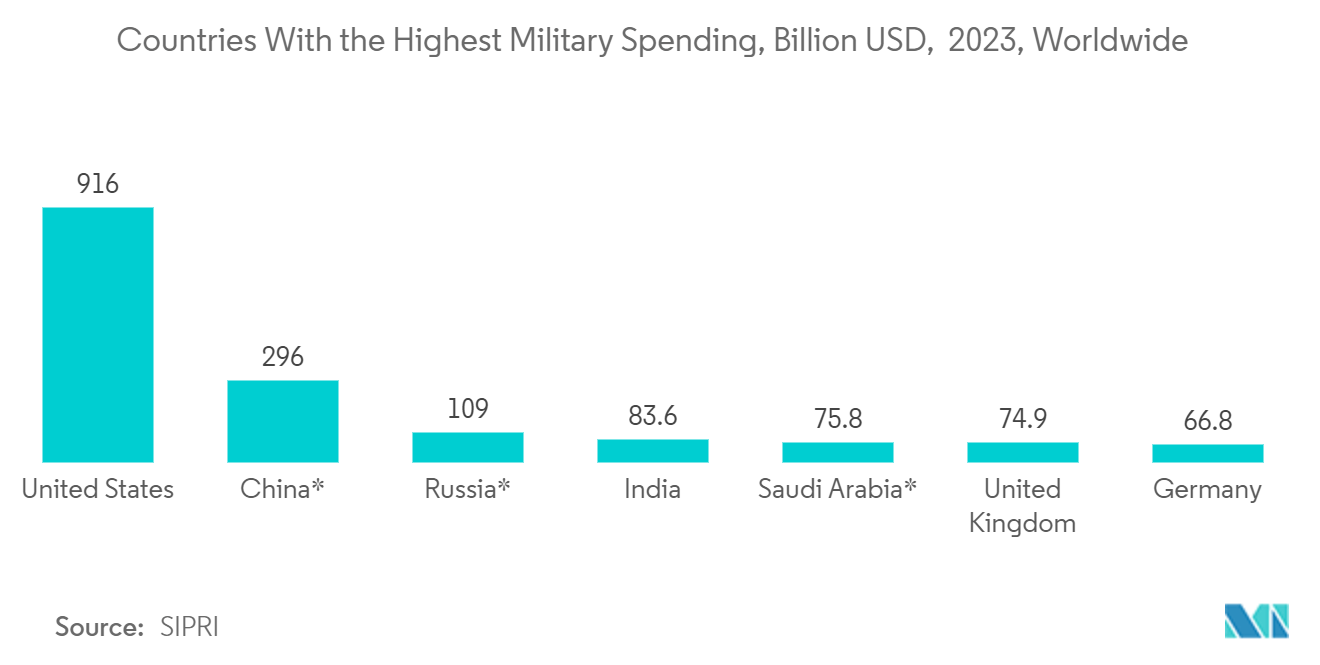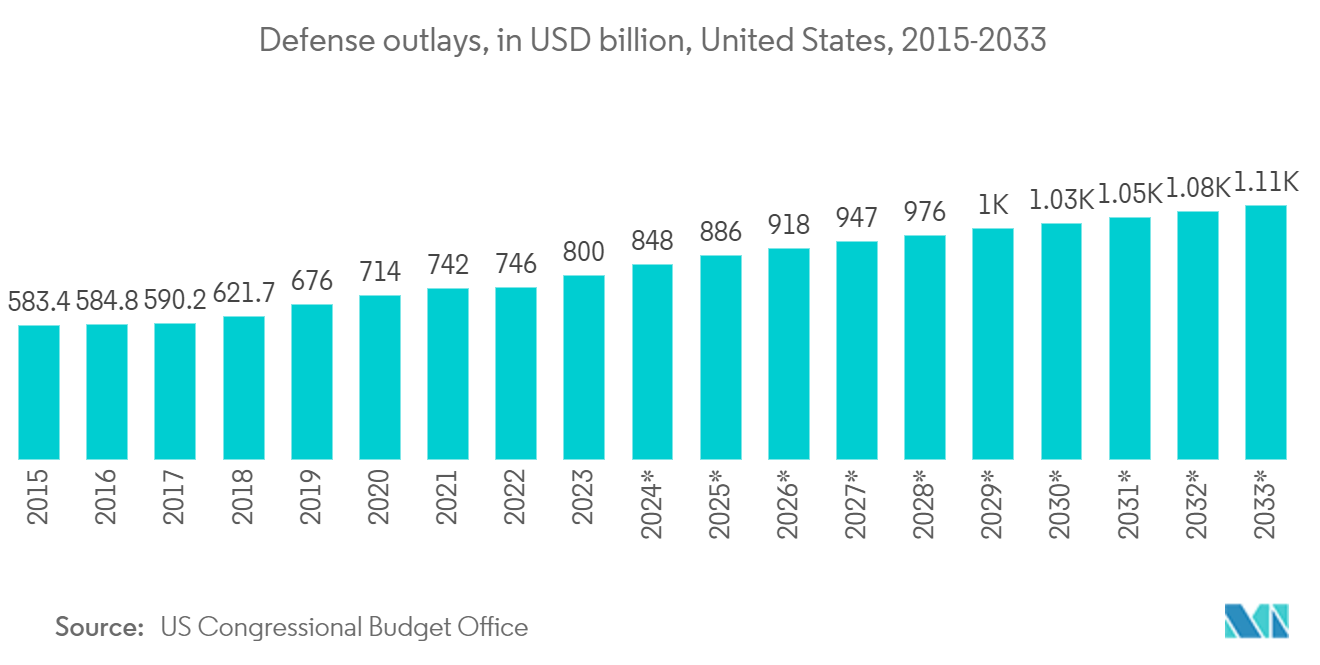Market Trends of United States Satellite Communications Industry
Maritime is Expected to Hold Significant Share
- The United States government policies or investment in the maritime industry is expected to drive the studied market. For instance, The Bipartisan Infrastructure Law (BIL) President Biden signed into law recently delivered a once-in-a-generation USD 1.2 trillion investment in the nation's infrastructure and competitiveness. In the maritime industry, the BIL invests more than USD 17 billion in port infrastructure and waterways with the main goals of addressing backlogs in needed repairs and maintenance, reducing traffic to strengthen supply chains and removing bottlenecks to speed up commerce, reducing emissions near ports by boosting electrification, and investing in other low-carbon technologies to reduce environmental impacts on nearby communities.
- Moreover, in August 2022, Inmarsat Government announced that the Defense Information Systems Agency (DISA) had given it the Next Generation Wideband (NGW) Follow-On (FO) Contract from the U.S. Navy Military Sealift Command (MSC) for global end-to-end commercial satellite communications services. The ceiling value of the award under this Indefinite-Delivery, Indefinite Quantity (IDIQ) contract is USD 578 Million over a ten-year term. Inmarsat Government will manage and run commercial communications infrastructures, such as satellite systems, teleport services, and terrestrial services, as part of the deal.
- The players in the market are providing new products to cater to a wide range of needs of customers. For instance, in July 2022, KVH Introduced KVH ONE Hybrid Network and Groundbreaking TracNetTerminals. Innovative terminals feature integrated satellite, cellular, and Wi-Fi technology with intelligent, automatic switching to keep boats connected to the best available communication option for fast, reliable sea and dock connectivity.
- Mobile Satellite communication enables the delivery of high bandwidth, which also helps in better data and voice transfers, simultaneously serving most other purposes. In July 2022, SpaceX launched the Starlink service into the maritime sector. The service would offer high-speed, low-latency internet with download speeds of up to 350 Mbps at sea. Starlink Maritime was designed for merchant ships, oil rigs, yachts, and others, delivering connectivity from remote locations at sea. Later, the service provider applied for more spectrum to upgrade Starlink satellite broadband services for mobile users in July. SpaceX asked the U.S. Federal Communications Commission for permission to use the 2 GHz spectrum band to 'augment' its mobile satellite services (MSS).
- According to the Union of Concerned Scientists, as of April 30, 2022, the United States had 3,433 operational artificial satellites circling the Earth. This is by far the most amount of any country, with China accounting for only 541. Moreover, satellite communication services offer secure bandwidth capacity for military operations in remote areas with insufficient and unstable communications infrastructure. In the upcoming years, the income from Fixed Satellite Services (FSS) utilized in government and military applications is projected to increase significantly in the North American region.

Defense and Government is Expected to Hold Significant Share of the Market
- To command and control forces, monitor opponent actions, and uncover threats that could jeopardize the United States and its allies, the US Department of Defense (DoD) relies on the advantages afforded by satellites for nearly every military mission. As per the Union of Concerned Scientists, out of 4,852 active artificial satellites orbiting the Earth, 2,944 belongs to the United States as of January 1, 2022. The United States Space Force (USSF) operates the USD 6.8 billion Satellite Control Network (SCN) for military warfighters, which consists of a global ground network of fixed antennas at seven sites to command more than 190 military and government satellites.
- Government agencies in North America have been making significant efforts to introduce new satellite and navigation systems that boosted the growth of the satellite communication industry. North America has a large coastal area that requires continuous monitoring. The increasing commercial activities and trade in the region are propelling the need for maritime safety and surveillance.
- The US coastal waters are most vulnerable due to its open borders. This nature of the vast maritime domain of the United States faces critical threats from terrorism, criminal activities, and natural disasters. The underlying threat poses unique and critical challenges in enforcing maritime safety, as illegal activities can happen from all directions across the country's maritime borders if there is no proper system for detection and identification. The factors mentioned above are anticipated to influence the market studied in the region during the forecast period.
- The country launched its fifth Advanced Extremely High-Frequency spacecraft (AEHF-5). This secured military communications satellite will provide jam-proof communications between US national leadership and deployed military forces, including real-time video. The United States has the world's largest military spending. The Senate Armed Services Committee approved a defense budget for FY2022 that was USD 25 billion higher than the President's proposal. The National Defense Authorization Act, with a defense budget of USD 740 billion.
- According to US Congressional Budget Office, Defence spending in the United States is expected to rise annually until 2033. Defense spending in the United States is expected to reach USD 746 billion in 2023. According to the prediction, defense spending is expected to rise to 1.1 trillion US dollars by 2033. Such huge spending by the government would create an opportunity for the studied market to grow and allow the players to develop new products to cater a wide range of needs of customers.


